The Complete Guide to Steel Manufacturing: Processes, Types, and Applications
Steel manufacturing is a cornerstone of industrial and economic progress, serving as the backbone for infrastructure, transportation, energy, and countless other sectors. From towering skyscrapers to intricate machinery, steel's unique properties of strength, durability, and versatility have made it one of the most relied-upon materials in modern society. Its production not only powers industries but also fosters innovation, enabling the creation of advanced technologies and groundbreaking designs.
In India, steel manufacturing holds a significant position, contributing substantially to the nation's industrial growth and global standing. The country is home to some of the world’s leading steel manufacturers, recognized for their quality, innovation, and sustainable practices. Below are some of the best steel manufacturing companies in India.
1. Introduction to Steel Manufacturing
Steel, an alloy of iron and carbon, is one of the most widely used materials in the world. Its remarkable strength, durability, and versatility make it indispensable across industries such as construction, transportation, and energy. The steel manufacturing process has evolved dramatically, from rudimentary smelting methods to today's advanced technologies that ensure precision, sustainability, and scalability.
2. The Steel Manufacturing Process
Steel manufacturing involves several steps, each critical to achieving the desired properties and quality. Here's an overview of the primary stages:
a. Raw Material Preparation
- Iron Ore Extraction: Iron ore is mined and processed to remove impurities.
- Coal Processing: Coal is converted into coke, a high-carbon material used in steelmaking.
- Limestone Addition: Limestone acts as a flux, aiding in the removal of impurities during smelting.
b. Smelting in Blast Furnaces
- Raw materials are fed into a blast furnace, where high temperatures (around 2,000°C) melt iron ore, producing molten iron (pig iron).
- The blast furnace process also generates slag, a byproduct used in construction materials.
c. Steelmaking
- Basic Oxygen Furnace (BOF): Pig iron is refined by blowing oxygen to reduce carbon content.
- Electric Arc Furnace (EAF): Scrap steel is melted and refined, a more energy-efficient and sustainable method.
d. Secondary Refining
- Processes like degassing, desulfurization, and alloying enhance the steel's properties.
- Specific techniques, such as vacuum degassing, ensure high-quality steel for specialized applications.
e. Casting and Shaping
- Continuous Casting: Molten steel is poured into molds to form billets, slabs, or blooms.
- Rolling and Forging: These shapes are further processed to produce sheets, bars, wires, or other final forms.
3. Types of Steel
Steel is categorized based on its composition and application:
a. Carbon Steel
- Contains varying levels of carbon, influencing strength and hardness.
- Subtypes: Low-carbon steel, medium-carbon steel, and high-carbon steel.
b. Alloy Steel
- Enhanced with elements like chromium, nickel, and molybdenum for improved properties.
- Common in automotive parts and machinery.
c. Stainless Steel
- Resists corrosion due to high chromium content.
- Widely used in medical instruments, kitchenware, and architecture.
d. Tool Steel
- High hardness and resistance make it ideal for cutting tools and dies.
4. Applications of Steel
- Construction: Skyscrapers, bridges, and pipelines.
- Automotive: Car frames, engines, and body panels.
- Energy Sector: Wind turbines, oil rigs, and pipelines.
- Consumer Goods: Appliances, furniture, and electronics.
5. Sustainability in Steel Manufacturing
The steel industry faces growing pressure to reduce its environmental impact. Innovations focus on:
- Energy Efficiency: Using renewable energy and optimizing furnace operations.
- Recycling: Steel is 100% recyclable, reducing waste and conserving resources.
- Carbon Capture: Technologies to capture and store CO2 emissions during production.
6. Future Trends in Steel Manufacturing
- Hydrogen-based Steelmaking: Reducing reliance on fossil fuels.
- Smart Manufacturing: Using AI and IoT to optimize production.
- Advanced Alloys: Developing steels with superior properties for specialized applications.
7. Challenges in Steel Manufacturing
Despite its significance, the industry faces challenges:
- High energy consumption and emissions.
- Volatile raw material prices.
- Balancing cost-efficiency with environmental sustainability.
8. Conclusion
Steel manufacturing remains a cornerstone of industrial development, underpinning the foundation of modern society. From towering skyscrapers and intricate bridges to the vehicles we drive and the appliances in our homes, steel plays an indispensable role in shaping the infrastructure and tools of our daily lives. Its versatility, strength, and durability make it a material of choice across countless industries, reflecting its significance in economic growth and technological progress.
Despite its complex and resource-intensive processes, steel manufacturing showcases the remarkable interplay of innovation and tradition. Advances in refining methods and the introduction of cutting-edge technologies have continually improved the efficiency, quality, and sustainability of steel production. At the same time, the industry's reliance on foundational principles such as smelting and alloying highlights a deep connection to its historical roots.
